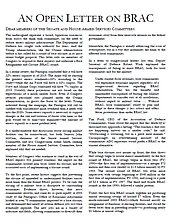In a recent review, the Pentagon concluded that it will have 22% excess capacity as of 2019. The Army will be carrying the greatest excess overhead — 33% according to the study — while the Air Force will have a 32% surplus. The Navy and Marine Corps combined will have 7% surplus in 2019. Notably, these projections are not based on the expectations of a much smaller force. Even if Congress reverses personnel cuts planned under the Obama administration, or grows the force to the levels Trump indicated during the campaign, the Pentagon will still be saddled with considerably more overhead than it needs well into the 2020s. Some excess capacity is necessary to support changes in the size and location of forces over time, so the goal would be to trim — not eliminate — the amount of excess capacity to a more prudent level.
It is understandable that discussions about closing military facilities can be controversial, but both Senator John McCain, chairman of the Senate Armed Services Committee, and also Congressman Adam Smith, ranking member of the House Armed Services Committee, have explained why they are needed.
Members of Congress who continue to stand in the way of BRAC express two primary concerns: the impact on the communities located near bases slated for closure, and the associated costs of implementing a closure round.
To the first point, recent history suggests that preventing the closure of unneeded or underutilized facilities causes more harm than the formal BRAC process. To be sure, the closing of a military base is disruptive to surrounding economies. Evidence shows, however, that most communities recover, and some do so quite rapidly. A 2005 study by the Pentagon’s Office of Economic Adjustment looked at over 70 communities impacted by a base closure, and determined that nearly all civilian defense jobs lost were eventually replaced. The new jobs are in a variety of industries and fields, allowing communities to diversify their economies away from their excessive reliance on the federal government.
Meanwhile, the Pentagon is already addressing the issue of overcapacity, but in a way that maximizes the harm to the affected local communities.
In a letter to congressional leaders last year, Deputy Secretary of Defense Robert Work explained the consequences of failing to enact BRAC, both for local communities and for the military:
